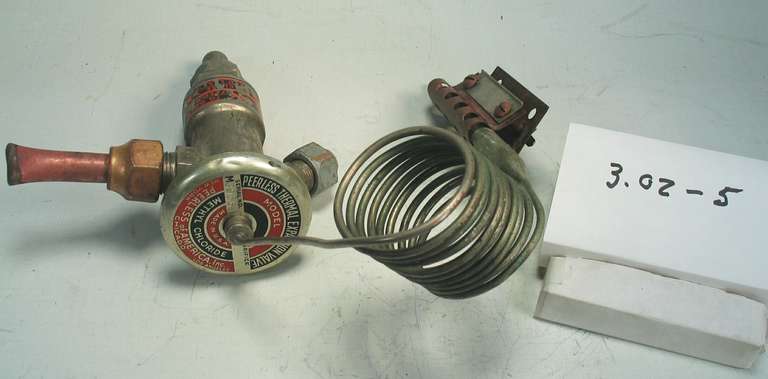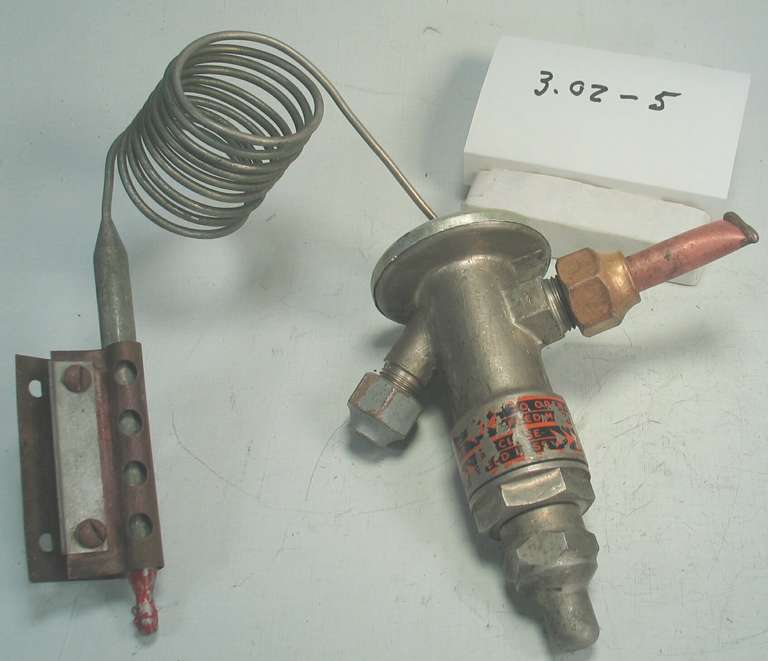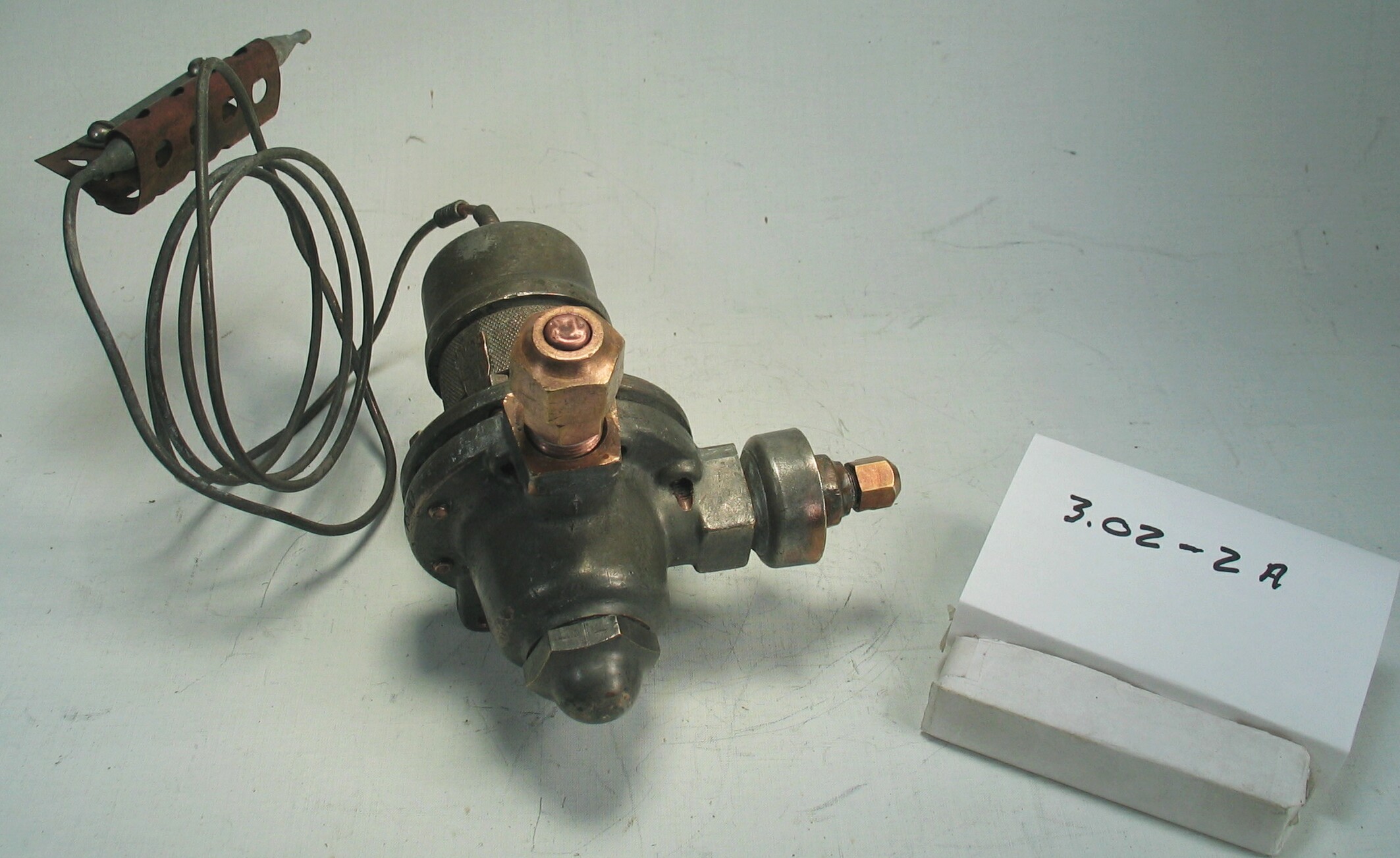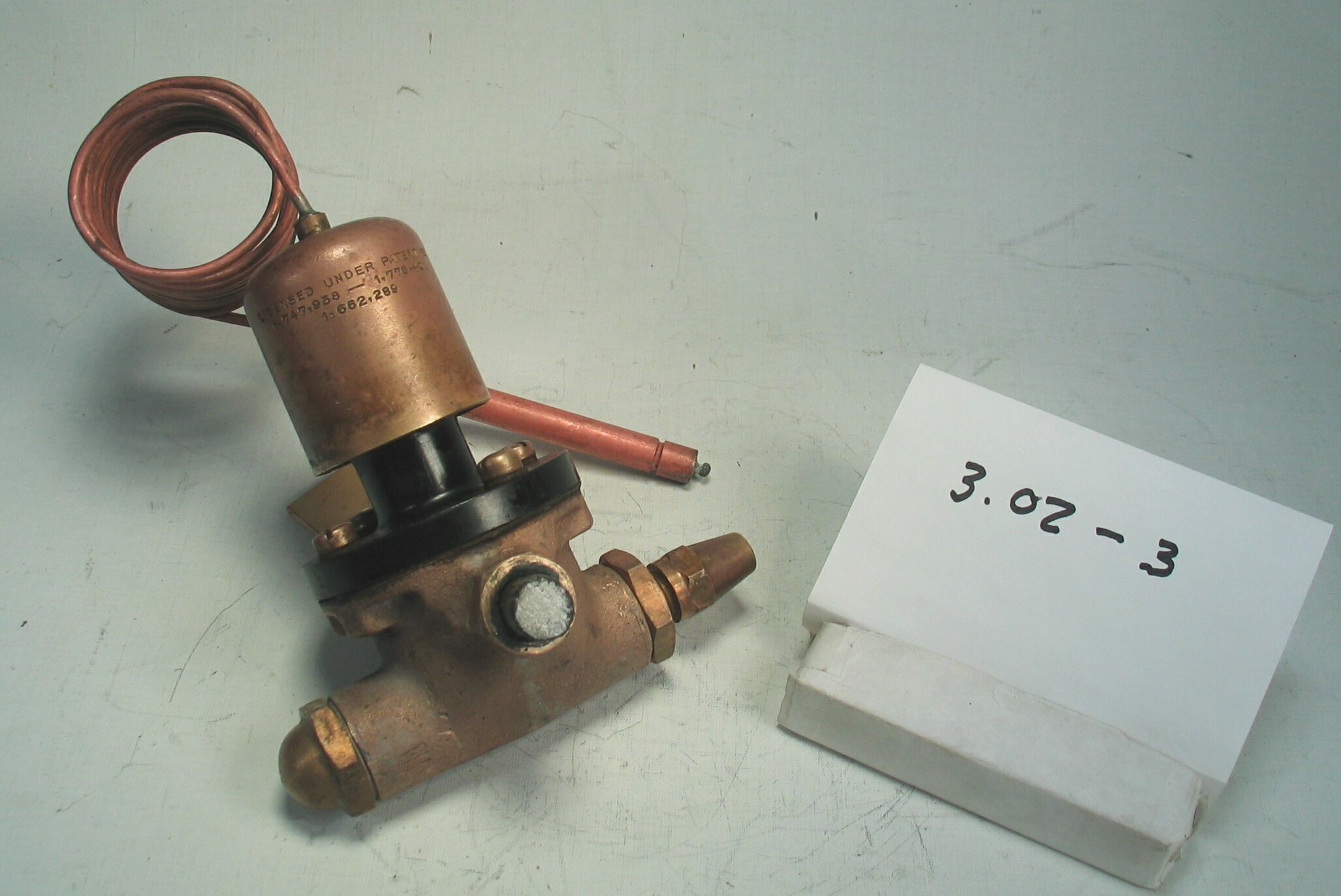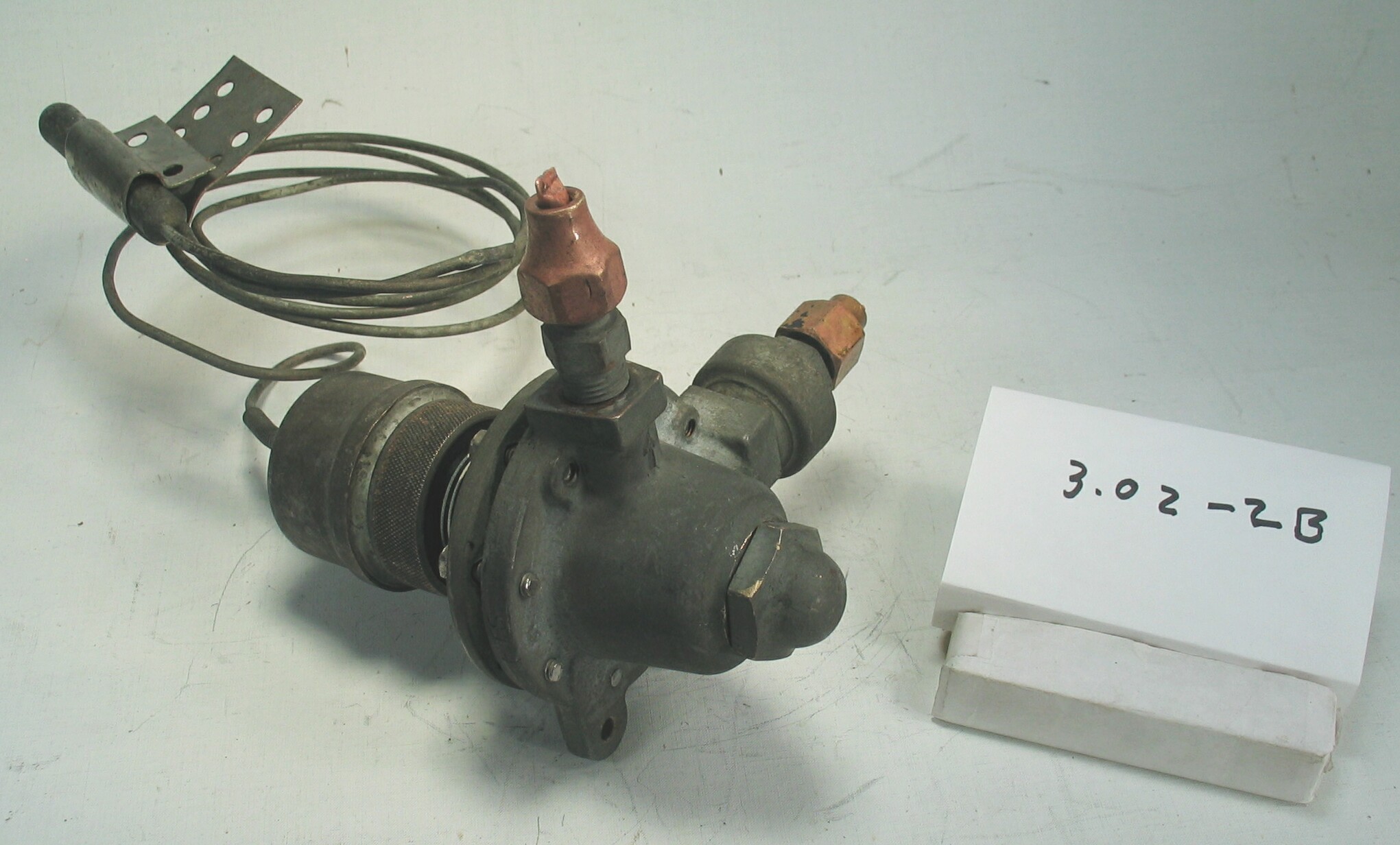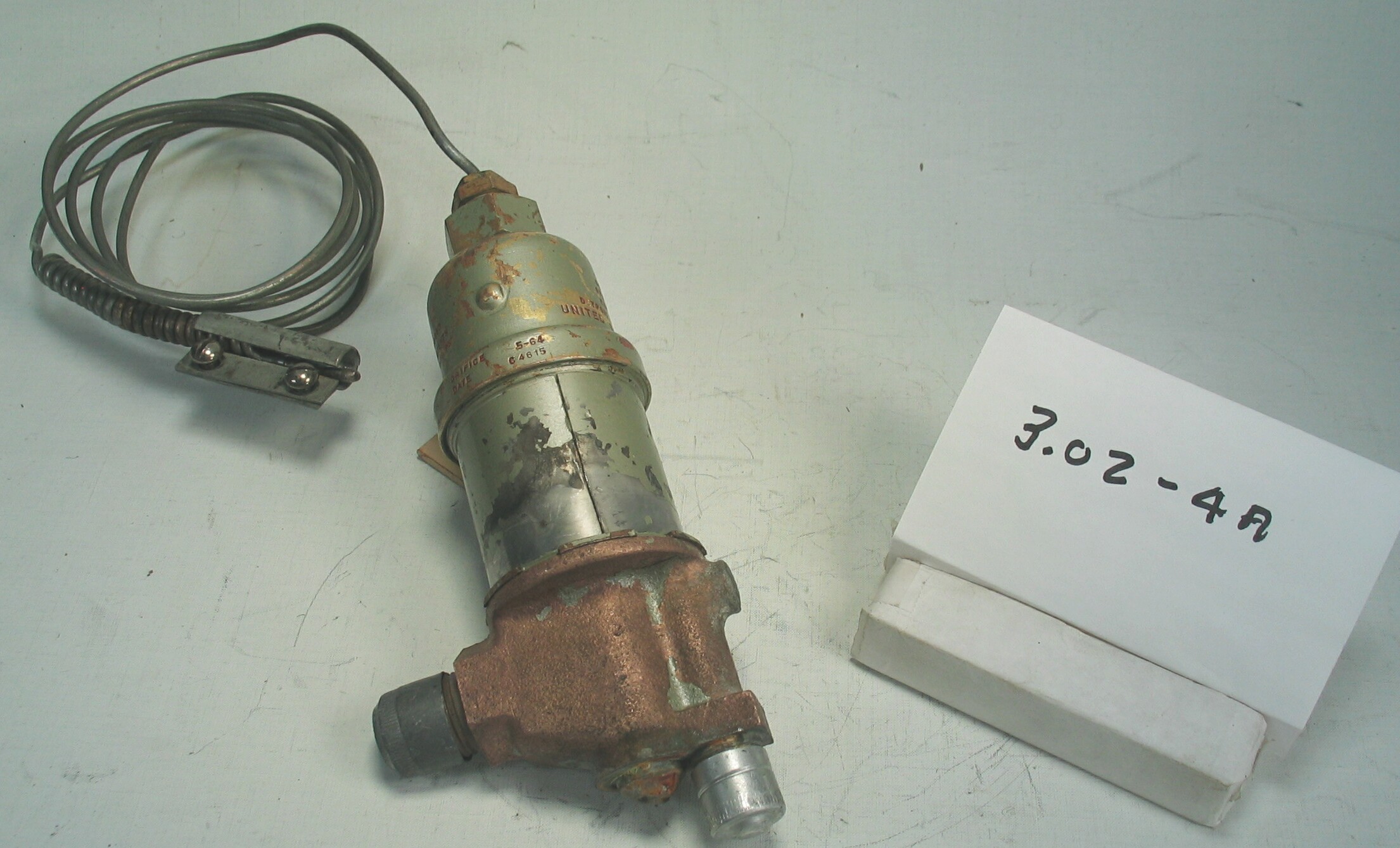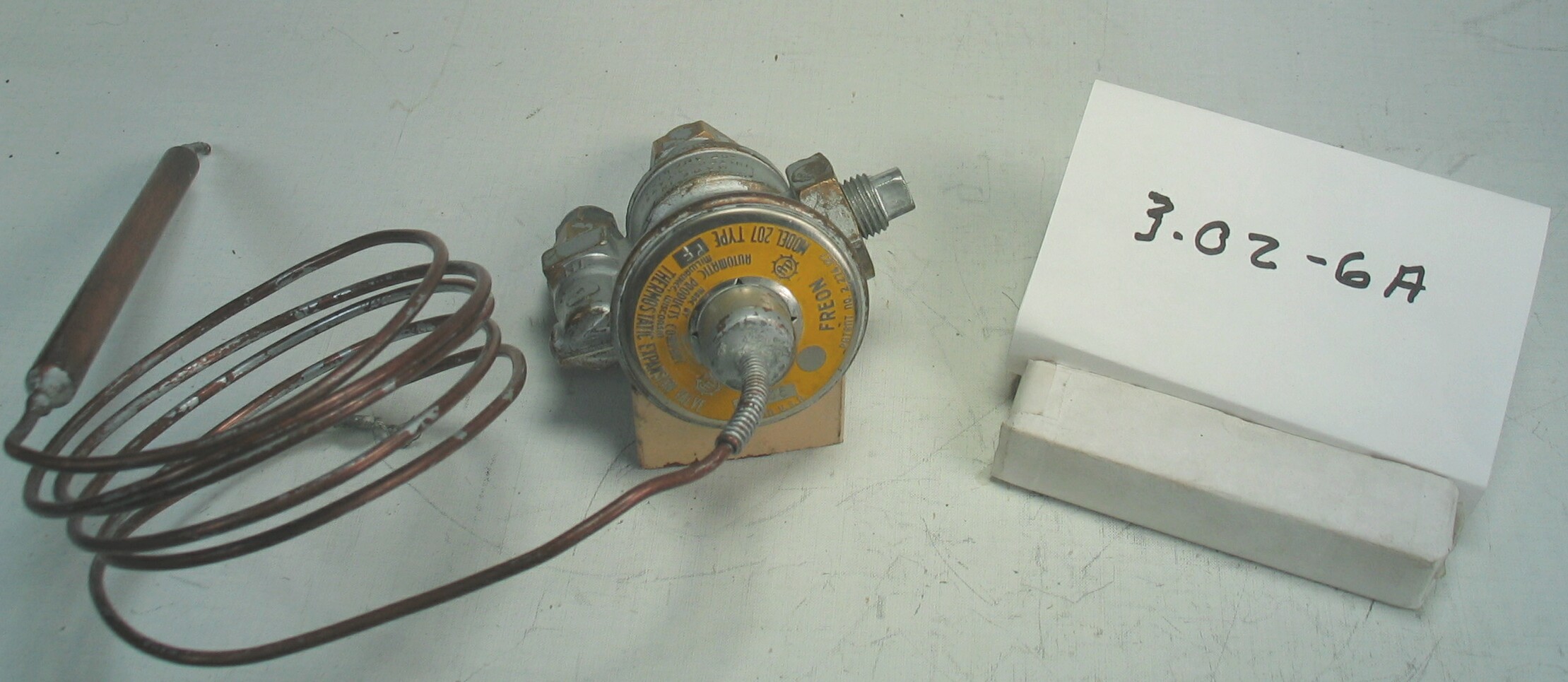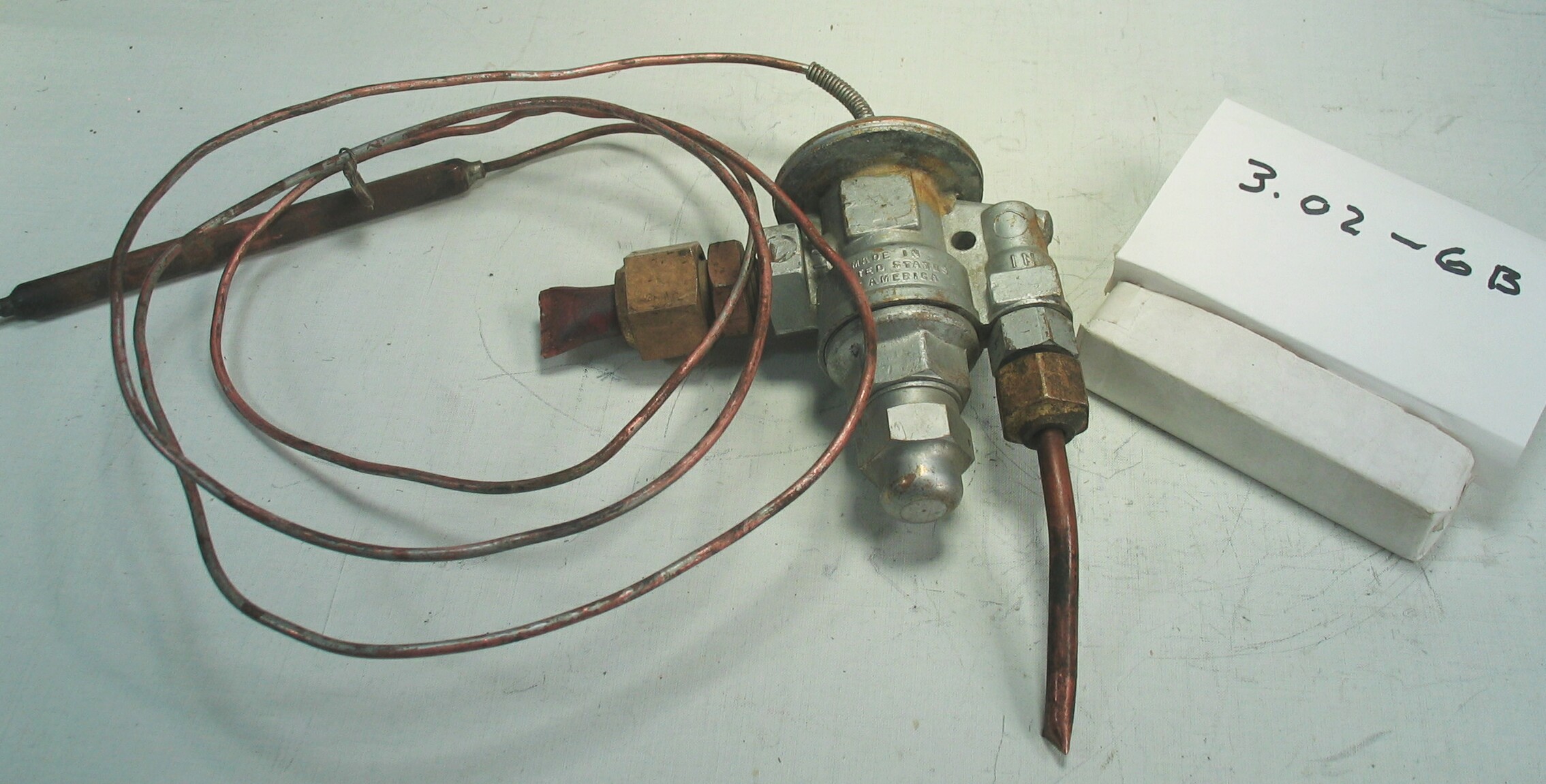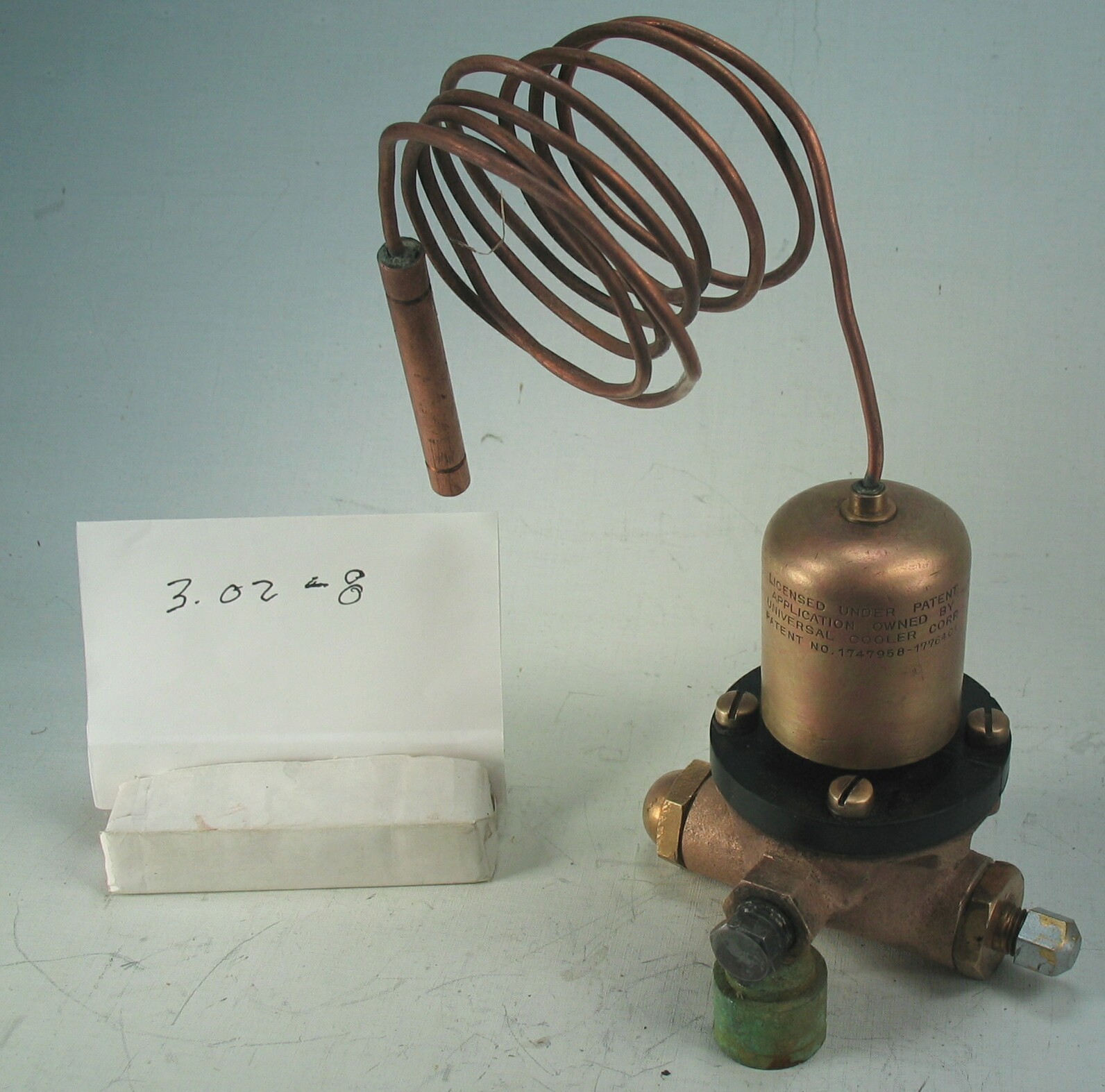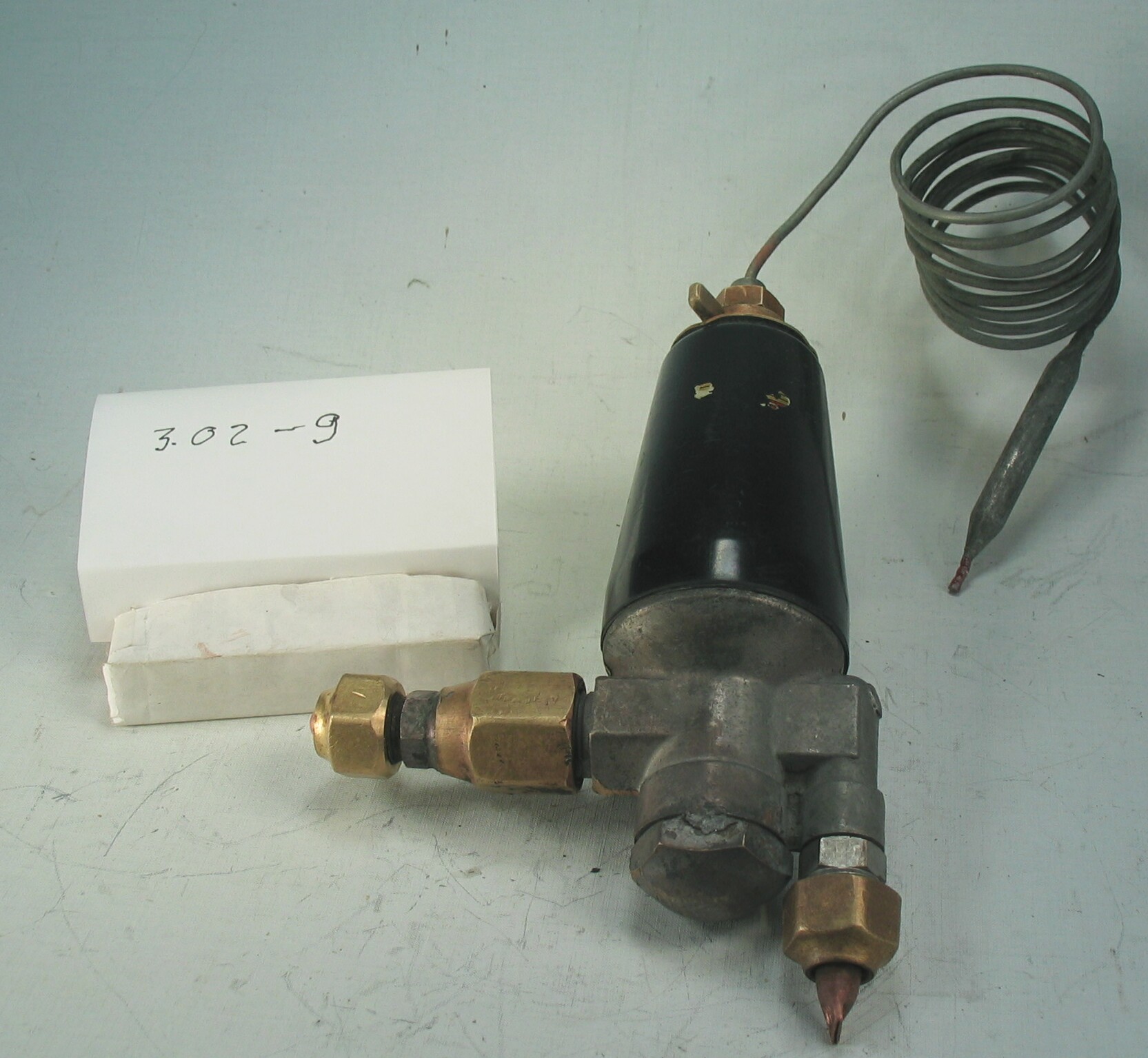3.02-5: Peerless 1948 Thermostatic Expansion Valve
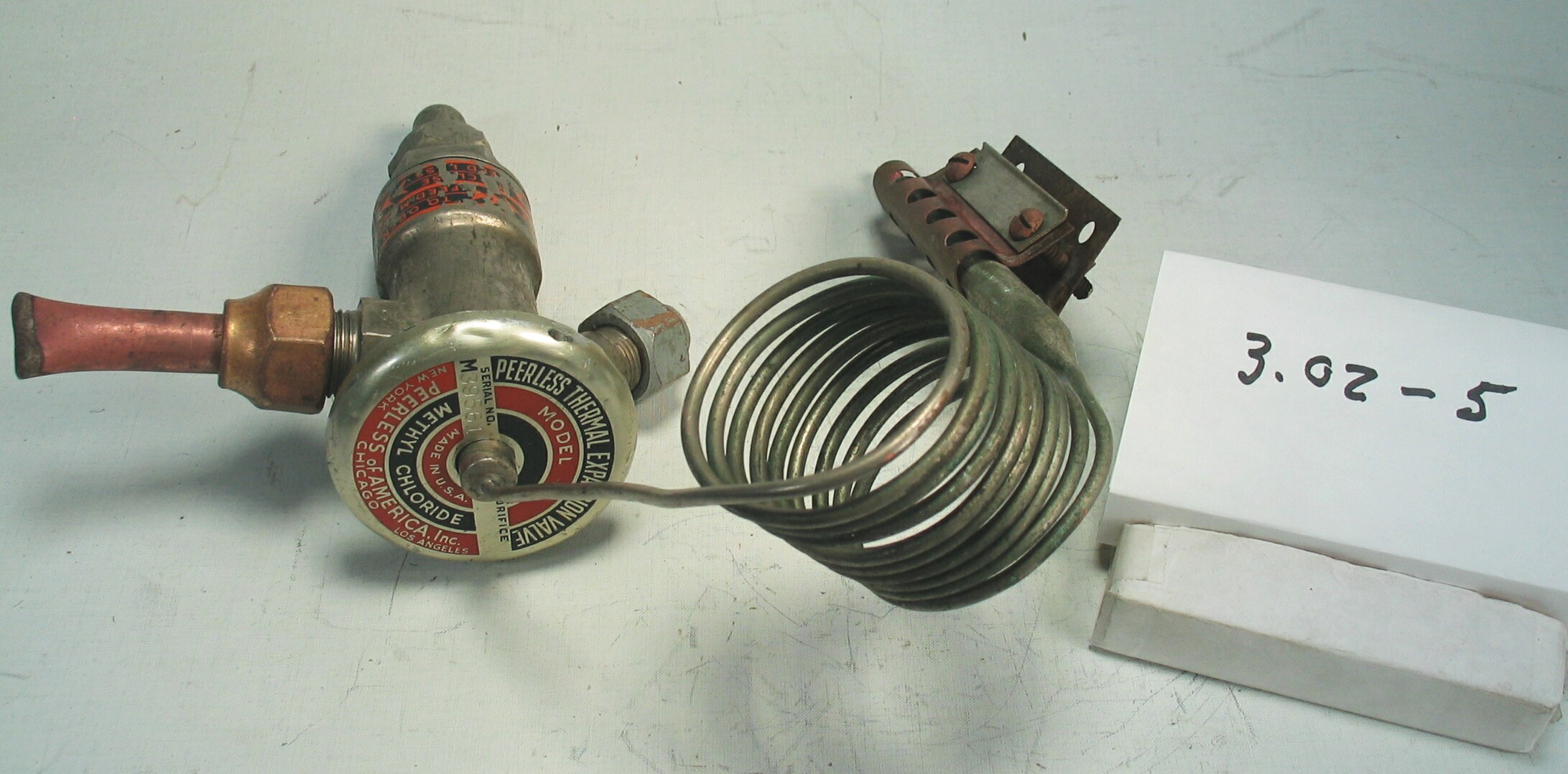
| HHCC Accession No. 2006.065 | HHCC Classification Code: 3.02-5 |
|---|
Description:
A mid to late 20th century, high capacity thermostatic expansion valve, for methyl chloride refrigerant; a special marker of the time when this refrigerant was still being specified by commercial refrigeration system manufacturers, in advance of the wave of conversion to chlorinated hydrocarbon refrigerants, Freon 12 and 22; in heavy, plated brass body with superheat adjustment, highly decorated it would represent an emerging new styling idiom for component part manufacturers, by a late 20th century newcomer to the field, Peerless, 1948.
Group:
3.02 Refrigerant Flow Controls - Commercial
Make:
Peerless
Manufacturer:
Peerless of America, New York, Chicago, and Los Angeles
Model:
V
Serial No.:
39561
Size:
5x 3 x 7 in. h
Weight:
3 lbs
Circa:
1948
Rating:
Exhibit, education, and research quality, illustrating the engineering design, construction, and operating principles, of a high capacity commercial application thermostatic expansion valve, for methyl chloride refrigerant, a unique marker of the fast approaching time when the refrigerant would fall out of popular use.
Patent Date/Number:
Provenance:
From York County (York Region) Ontario, once a rich agricultural hinterlands, attracting early settlement in the last years of the 18th century. Located on the north slopes of the Oak Ridges Moraine, within 20 miles of Toronto, the County would also attract early ex-urban development, to be come a wealthy market place for the emerging household and consumer technologies of the early and mid 20th century.
This artifact was discovered in the 1950’s in the used stock of T. H. Oliver, Refrigeration and Electric Sales and Service, Aurora, Ontario, an early worker in the field of agricultural, industrial and consumer technology.
Type and Design:
Construction:
Material:
Special Features:
Original superheat bulb clamp
Accessories:
Capacities:
Performance Characteristics:
Operation:
Control and Regulation:
Targeted Market Segment:
Consumer Acceptance:
Merchandising:
Market Price:
Technological Significance:
A mid to late 20th century, high capacity thermostatic expansion valve, for methyl chloride refrigerant; a special marker of the time when this refrigerant was still being specified by commercial refrigeration system manufacturers, in advance of the wave of conversion to chlorinated hydrocarbon refrigerants, Freon 12 and 22. In a heavy, plated brass body, an unusually robust, crisp and polished product for the times, when compared with other valves off the period, see for example #ID 184 and 185. With colourful orange and black decal and imprinted red and black cover plate the valve would represent a new era in industrial, component, product design, bring with it a fresh new look and sales appeal.
Industrial Significance:
Manufactured by a late 20th century newcomer to the field, one bringing fresh new ideas about how an expansion valve should look and operate.
Highly decorated it would represent the values and interests of a new generation of mid 20th century industrial design.
Socio-economic Significance:
The socio-cultural significance of the impact of the unobtrusive, thermostatic expansion valve on life in Canada, throughout the latter part of the 20th century, would be hard to over-estimate. It would become the quintessential, automated refrigerant flow regulating device for most medium and larger commercial refrigeration applications, found in confectioneries, food stores and ware houses. It would help to make possible the wide array of foods and confectionery products Canadians would come to enjoy, as part of the late 20th century Canadian life experience.
Socio-cultural Significance:
Donor:
G. Leslie Oliver, The T. H. Oliver HVACR Collection
